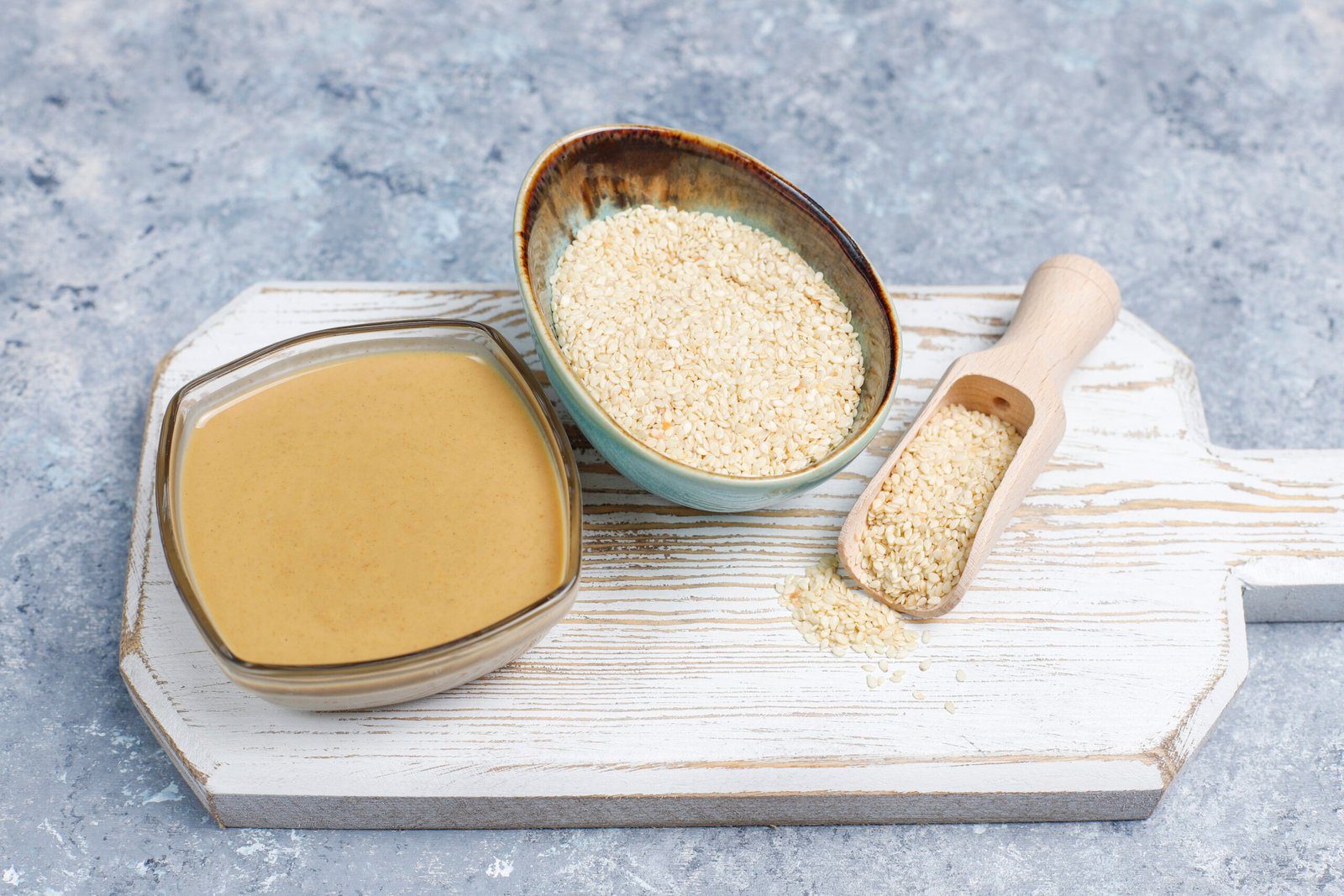Tahhiini (Tahini) Explained: The Ultimate Guide to the Sesame Seed Paste

In the pantheon of global culinary staples, few ingredients offer the versatility, rich history, and profound nutritional density of tahini, sometimes spelled as tahhiini. This smooth, creamy paste, crafted from nothing more than hulled and ground sesame seeds, is a cornerstone of Middle Eastern, Mediterranean, and North African cuisines, serving as the foundational element for iconic dishes like hummus and baba ganoush while simultaneously emerging as a modern superfood in wellness communities worldwide. Its flavor profile is a complex symphony of nutty, earthy, and slightly bitter notes, with a luxurious texture that can elevate everything from savory sauces to sweet confections. However, for the uninitiated, a jar of tahini can present a mystery—how to use it beyond classic recipes, how to select a quality product from the store shelf, and how to understand its separation into oil and paste are common questions. This comprehensive guide is designed to demystify tahini in all its forms, delving into its ancient origins, breaking down its impressive nutritional portfolio, providing expert techniques for seamlessly integrating it into your daily cooking, and even guiding you through the simple process of creating your own fresh batch at home, empowering you to fully embrace the culinary magic of this timeless and transformative ingredient.
A Brief History and Production: From Ancient Seed to Modern Pantry Staple
The story of tahini is as old as agriculture itself, with historical evidence suggesting that sesame seeds, one of the first plants to be cultivated for their oil, were ground into a paste as far back as 3500 BCE in the regions that are now Iran and Iraq. This simple yet revolutionary process of transforming tiny, oil-rich seeds into a durable, nutrient-packed paste allowed ancient civilizations to preserve the bounty of their harvests and create a calorie-dense food source that could sustain them through lean times. The traditional method of producing tahini, which remains largely unchanged millennia later, involves first soaking and then hulling the sesame seeds to remove the bitter outer bran, though unhulled versions also exist and offer a more robust, bitter flavor and higher fiber content. The seeds are then slowly roasted to develop their deep, nutty aroma before being crushed and ground between large millstones. This grinding process generates friction and heat, which coaxes the natural oils out of the seeds, gradually transforming the dry, crushed fragments into a smooth, flowing paste. The quality of tahini is determined by every step of this process; the origin of the seeds, the precision of the roasting, and the fineness of the grind all contribute to the final product’s flavor, texture, and color, creating a spectrum of tahinis from light and delicate to dark and intensely robust.
The Nutritional Powerhouse: Deconstructing the Health Benefits of Tahini
Beyond its culinary applications, tahini stands as a formidable nutritional powerhouse, densely packed with essential vitamins, minerals, and healthy fats that contribute to overall well-being. It is an exceptional source of plant-based protein and dietary fiber, both of which promote satiety, aid in digestive health, and provide a sustained release of energy, making it an excellent addition to meals for those seeking to maintain a balanced diet. Perhaps most notably, tahini is overflowing with vital minerals; it is one of the richest dietary sources of copper, which is crucial for iron absorption and nervous system function, and it provides significant amounts of phosphorus, magnesium, and zinc, which play key roles in bone health, energy production, and immune support. The paste is also abundant in B vitamins, particularly thiamine (B1) and B6, which are essential for converting food into energy and maintaining cognitive health. Furthermore, the primary fat in tahini is unsaturated fat, including a noteworthy amount of linoleic acid, an omega-6 fatty acid that contributes to heart health when consumed as part of a balanced diet. It is important to note that while tahini is energy-dense due to its healthy fat content, its impressive nutrient profile means that even a small serving can deliver a substantial portion of your daily nutritional requirements, justifying its celebrated status as a true superfood.
Culinary Applications: Mastering the Use of Tahini in Your Kitchen
The culinary versatility of tahini is nothing short of remarkable, extending far beyond its famous role as the base for hummus. Its ability to emulsify, thicken, and add richness makes it an invaluable ingredient for both savory and sweet creations. In the realm of savory dishes, tahini is the secret to creating impossibly creamy and dairy-free salad dressings and sauces; simply whisk it with lemon juice, garlic, and water until it transforms from a thick paste into a smooth, pourable consistency known as tarator sauce, perfect for drizzling over grilled vegetables, falafel, or grain bowls. It can be stirred into soups to add body and a nutty depth, used as a base for marinades for chicken or tofu, or swirled into roasted vegetables like carrots or sweet potatoes before they go into the oven. On the sweet side, tahini has revolutionized modern dessert-making, offering a sophisticated, nutty alternative to peanut butter. It can be swirled into brownie batter, blended into smoothies for a protein boost, whisked into a glaze for cakes and doughnuts, or simply stirred into yogurt with a drizzle of honey for a simple and profoundly satisfying snack. The key to unlocking its potential is to remember that it is a condiment, a ingredient, and a flavor enhancer all in one, limited only by the chef’s imagination.
Conclusion: Embracing the Versatility of a Timeless Ingredient
Tahini, in all its spellings and forms, is much more than a simple paste; it is a culinary bridge connecting ancient tradition to modern innovation, a testament to the idea that the most profound flavors often come from the simplest of ingredients. Its journey from a staple of ancient larders to a celebrated feature in contemporary health-conscious kitchens is a story of enduring utility and unmatched versatility. By understanding its rich history, respecting its nutritional prowess, and mastering its many culinary applications, you unlock the potential to transform everyday meals into extraordinary culinary experiences. Whether you are whisking it into a tangy dressing, folding it into a decadent dessert, or savoring it in its most iconic form in a bowl of creamy hummus, you are participating in a timeless culinary ritual. So, the next time you encounter that jar in your pantry, see it not as a single-use ingredient but as a gateway to a world of flavor, nutrition, and creative possibility, waiting to be stirred and enjoyed.
Step 3: Frequently Asked Questions (FAQ)
Q1: What is the difference between tahini and peanut butter?
A: While both are spreads made from ground seeds, they are fundamentally different. Tahini is made solely from sesame seeds, resulting in a thinner, more pourable consistency and a distinct nutty, slightly bitter, and earthy flavor profile. Peanut butter is made from peanuts, yielding a thicker, often sweeter, and more robustly nutty spread. Nutritionally, tahini generally offers more minerals like calcium, copper, and phosphorus, while peanut butter tends to be higher in protein and certain B vitamins.
Q2: Why does the oil separate in my jar of tahini, and what should I do?
A: Oil separation is a completely natural and expected process in pure, natural tahini because it contains no emulsifiers or stabilizers. The sesame oil naturally rises to the top. To remedy this, simply stir the paste vigorously with a spoon or a small whisk until the oil is fully reincorporated into the solid paste. For easier mixing, you can let the jar sit in a bowl of warm water for a few minutes to slightly loosen the paste at the bottom first.
Q3: Is tahini gluten-free and vegan?
A: Yes, pure, high-quality tahini made from 100% sesame seeds is naturally both gluten-free and vegan. It is a fantastic ingredient for those following plant-based, gluten-free, or dairy-free diets, acting as a creamy base for sauces, dressings, and dips without the need for animal products or gluten-containing grains. Always check the label to ensure no additional ingredients have been added.
Q4: How should I store tahini, and how long does it last?
A: Due to its high oil content, tahini should be stored in a cool, dark place, such as a pantry. Once opened, many producers recommend refrigerating it to prevent the oils from turning rancid and to maintain freshness. A jar of tahini typically has a long shelf life; when stored in the pantry, it can last for several months, and refrigeration can extend its life to a year or more. Always refer to the “best by” date on the jar for guidance.
Q5: What’s a good substitute for tahini in a recipe?
A: The best substitute depends on the recipe. For its creamy texture in dressings or dips, cashew butter or Greek yogurt (if not vegan) can work. For a nutty flavor in baking, almond butter is a good alternative, though it will be sweeter. However, for authentic dishes like hummus, there is no perfect substitute that replicates tahini’s unique flavor and ability to create a perfectly smooth emulsion.



